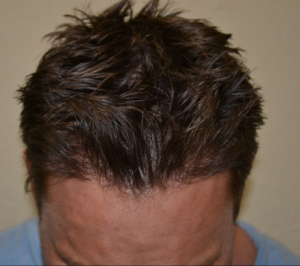Male or female, we all take pride in our hair. It is probably the second most sexually appealing segment of the human anatomy. So what happens when our hair starts falling out? While balding can happen to both men and women, it usually affects males more than females. Up to 50 percent of men suffer from this debilitating disease and this can cause low self-esteem and loss of quality of life. People with severe hair loss, or those that do not respond to more conservative treatments, may require surgery to restore hair loss and promote new hair growth.
Male pattern baldness or androgenic alopecia is usually caused by the dihydrotesterone (DHT) hormone. DHT is commonly synthesised in the adrenal glands, testes, prostate and, of course, the hair follicles. Androgenic alopecia causes hair follicles to be extremely sensitive to the DHT hormone and thus, the hair follicles begin to shrink, resulting in an abnormal production of hair. While androgenic alopecia accounts for over 90 percent of male pattern baldness, other causes can include, stress, traction alopecia (in people who aggressively pull their hair back to form ponytails or cornrows), trichotillo- mania (compulsive pulling of hair), chemotherapy and more.
The other harvesting method is Follicular Unit Extraction (FUE), this method is much safer and also involves minimal scarring, invisible to the naked eye. How this method works is by extracting individual follicular units and transplanting them to the balding areas. Although the FUE method is preferred, this manual process still means lengthy procedure time. Dr. Bishara is proud to offer a wide range of comprehensive hair restoration procedures, including FUT and FUE methods. Combined with his extensive experience and advanced skills, these procedures are often highly effective. The best treatment option for each patient depends on the location and extent of hair loss.
For the very latest technology in hair restoration, Dr. Bishara is now using the ARTAS System., which Neoasia Sdn Bhd has introduced– a fully robotic system that has the capability to replicate the FUE method with unmatched precision and rapid speed. We spoke to Dr. Mark Bishara, cosmetic surgeon from Texas and Dr. Ko, the first doctor to offer the ARTAS Robotic System in South East Asia.


According to Dr. Bishara, the ARTAS Robotic System utilises a robotic arm and sophisticated digital imaging to harvest follicular units. It has the amazing capacity to target each hair follicle in random fashion to ensure donor areas retain their natural appearance. The individual hairs are then implanted into the affected area, resulting in natural looking hair re-growth. Dr. Bishara says, “The ARTASTM Robotic System is the most sophisticated automated device in the medical field today.” Dr. Ko adamantly concurs and believes this machine is just so “clever”. Dr. Ko says that be- fore this system was installed in his clinic, he only used the FUT method which was very tedious and would take many hours off his busy schedule. Now with the ARTAS Robotic System, patients suffering from androgenic alopecia can have a full head of hair in just two hours.
Dr. Bishara will take the time to evaluate each patient, discuss his/her individual goals and together develop a personalized treatment plan using one of his many successful hair loss treatment options. Please contact us for more information: (817) 473-2120













